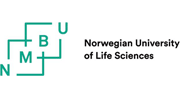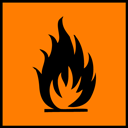Alpha hexachlorocyclohexane (alpha HCH)
Traded as: N/A
What is it? Unintentional by-product in the lindane production.
Use (purpose): Alpha and beta -HCH are secondary by-products, no final application.
Generally, HCH and its forms are among the best studied pesticides from the point of view of health and environmental effects, its behaviour in the environment being relatively well known (Breivik et al., 1999).
Present status: Since 2009 the Stockholm Convention classifies the alpha-HCH as a POP, its production being conditioned by specific exceptions for acceptable purposes. During the sixth meeting of the Conference of Parties to the Stockholm Convention (COP-6), organized in Geneva in 28 April – 10 May, 2013, the Annexes A, B and C of the Convention were amended, with certain specific exemptions and acceptable purposes, in order to include 11 new substances identified as having POP features, among which Alphahexachlorocyclohexane and Betahexachlorocyclohexane. However, these two substances do not represent the subject of any exemption, as they are banned in terms of production as well as usage in all signing countries.
In Romania: there are no known production capacities for alpha-HCH or other HCH isomers.
Health effects: In humans, the inhalation of toxic quantities of alpha-HCH induces coughing, throat irritation, dizziness, headaches, possible changes of sexual hormones blood concentrations and blood disorders. The chemical is absorbed through skin, producing itches, stinging, irritation, irritability. There were cases of people having accidentally swallowed large amounts of alpha-HCH, and who suffered seizures, convulsions, coma and death from respiratory arrest. The prolonged exposure to small doses is carcinogenic to humans. Other symptoms: diarrhoea, dizziness, headaches, nausea, vomiting, tremor, confusion and lack of muscular coordination, hyper-excitement, nervousness.
In animals, the consumption of feed contaminated with alpha-HCH leads to convulsions and death. It affects the kidneys and the liver. In mice and rats, the consumption of feed contaminated with alpha-HCH or industrial HCH during a long period of time induced liver cancer. Is deadly for fish and amphibians.
Exposure limit, lethal dose: Alpha-HCH in small concentrations is deadly for humans. The accepted exposure limit for alpha-HCH in the United States is of 0.0026 micrograms/litter of water (meaning the equivalent of a grain of pepper in a 20 cubic meters of water). The chemical is present in the environment, especially in fish, where it reaches concentrations of 600 - 700 times the water concentration in salmon, carp and ide (Sugiura et al.,1979) and even 10,000 – 50,000 times greater the water concentration in bream meat and fat in Germany (Arbeitsgemeinschaft für die Reinhaltung der Elbe, 1982).
Contamination sources:
- Occupational: the exposed population are workers in the HCH-based pesticide production.
- Food: Geyer et al. (1986) consider that in the industrialised countries more than 90% of the HCH-derivatives exposure is done through contaminated food. The average alpha-HCH concentration found in humans was of 0.03 mg/kg in Germany and of 0.02 mg/kg in Holland.
Useful links: alpha-hexachlorocyclohexane (in English)








